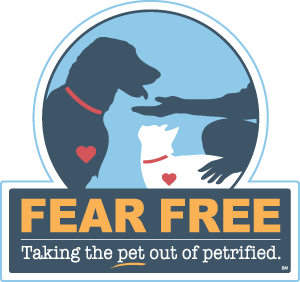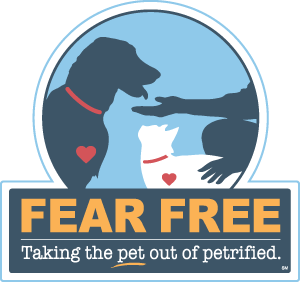April 2018 Observer Today Article
By Dr. Rebekah Frost
My youngest son Colton is 5 years old and has learning disabilities. From the time he started going to the dentist, he was fearful of this place with the loud noises and the strange people poking and prodding in his mouth. Just recently a new pediatric dentist came into town and I scheduled an appointment right away with their office.
Colton behaved the usual way wiggling and writhing in his chair trying to get away from the strange women. He just didn’t understand why these people were sticking their hands in his mouth. On the way out the door, Colton was given a toy and some stickers and it made things much better. The dentist then suggested he come back every couple of months just for a peek in his mouth and to help desensitize him to the fear of the dentist. What a great idea! Each time has been better and better. He gets balloons and toothbrushes, he gets to watch a movie, and hopefully we will soon be able to have his teeth cleaned again.
I can’t help but relate Colton’s experience to some of my pet patients’ experiences in our hospital. I have come to the understanding that we should institute similar ideas for our patients to help them feel calm and comfortable when they come for their veterinary visits.
 Taken from the Fear Free Website: “Founded in 2016, Fear Free provides online and in-person education to veterinary professionals, the pet professional community, and pet owners. Our courses are developed and written by the most respected veterinary and pet experts in the world, including boarded veterinary behaviorists, boarded veterinary anesthesiologists, pain experts, boarded veterinary internists, veterinary technicians (behavior), experts in shelter medicine, animal training, grooming, boarding and more.
Taken from the Fear Free Website: “Founded in 2016, Fear Free provides online and in-person education to veterinary professionals, the pet professional community, and pet owners. Our courses are developed and written by the most respected veterinary and pet experts in the world, including boarded veterinary behaviorists, boarded veterinary anesthesiologists, pain experts, boarded veterinary internists, veterinary technicians (behavior), experts in shelter medicine, animal training, grooming, boarding and more.
By closely listening to the needs of the profession and those of pet owners, Fear Free has become one of the single most transformative initiatives in the history of companion animal practice, providing unparalleled education on emotional well-being, enrichment and the reduction of fear, anxiety and stress in pets.”
The staff members at the Dunkirk Animal Clinic have already been following many of the Fear Free recommendations, but we have decided to make it official by having each of our team members become a certified professional of the Fear Free Initiative. So what does this mean for you and your pet?
We are working to transform our clinic into a Fear Free clinic by making you and your pet feel comfortable when they come for a visit. We will do our best to enrich our environment to help alleviate fear, anxiety, and stress in your pet. Examples include scheduling fearful pets at a quieter time of the day and providing calming pheromone diffusers in our waiting room areas to help calm anxious pets. We will offer a variety of treats to your pets to help distract them from the exam that may be stressful to them. We will work with your pet slowly and calmly. We will find what form of gentle restraint works best for your pet so we can efficiently do the necessary procedures.
This would include doing the exam on the floor, using non slip pads on our tables, holding and snuggling wiggly puppies during their exam, or putting your kitty in our lap while we are examining or drawing blood. We will use a “touch gradient” at all times which might include gentle stroking or scratching so as not to startle the pet during their exam. If your pet is getting too stressed, we may not finish all the procedures and have you come back when the pet is calmer. We may recommend routine visits just to get some scratches and treats. This method helps your pet associate positive reinforcers with our clinic.
If your pet is aggressive or extremely fearful despite our best efforts at calming them, we may recommend you come back with an antianxiety medication given to your pet prior to the visit. During some visits we may use a “basket muzzle” as long as it’s not stressful to the patients. These muzzles allow the pet to still pant and keep their mouths open during the exam but will protect our staff and yourself from potentially being bitten if your dog is sensitive to the exam and vaccinations.
Our goal at the Dunkirk Animal Clinic is to give your cats and dogs the best care possible in an environment that makes them feel happy, secure, and comfortable.
Over the past few months we have been working to make some changes that go along with the Fear Free initiative and are excited with the outcomes we are seeing. When you make an appointment you may be asked questions about your pet. “Is he good with other dogs?”, “Is he fearful when he comes to the vet?” We may ask you not to feed your pet any breakfast or dinner so they are more apt to accept treats from us. We may also ask you to keep your dog in the car until their appointment or to walk them outside. We will request that you bring your cat in a carrier with a blanket to cover the carrier until they are in the exam room.
Please understand if we ask you to do any of these things, we are only trying to make your pet and other pets that may be fearful more comfortable. We are excited for these changes and what it means for our patients. We are doing this because we want what is best for your pets as if they were our own! If you have any questions about the fear free movement or how you can help your pet as you prepare for your visit with us or even for the car ride over to our clinic, please don’t hesitate to call. We are working on having brochures, handouts, and online links available to help with all of these things and to help prepare you and your pet for your visit to our hospital!
Learn more about Fear Free by visiting our Fear Free webpage and checking out fearfreehappyhomes.com

